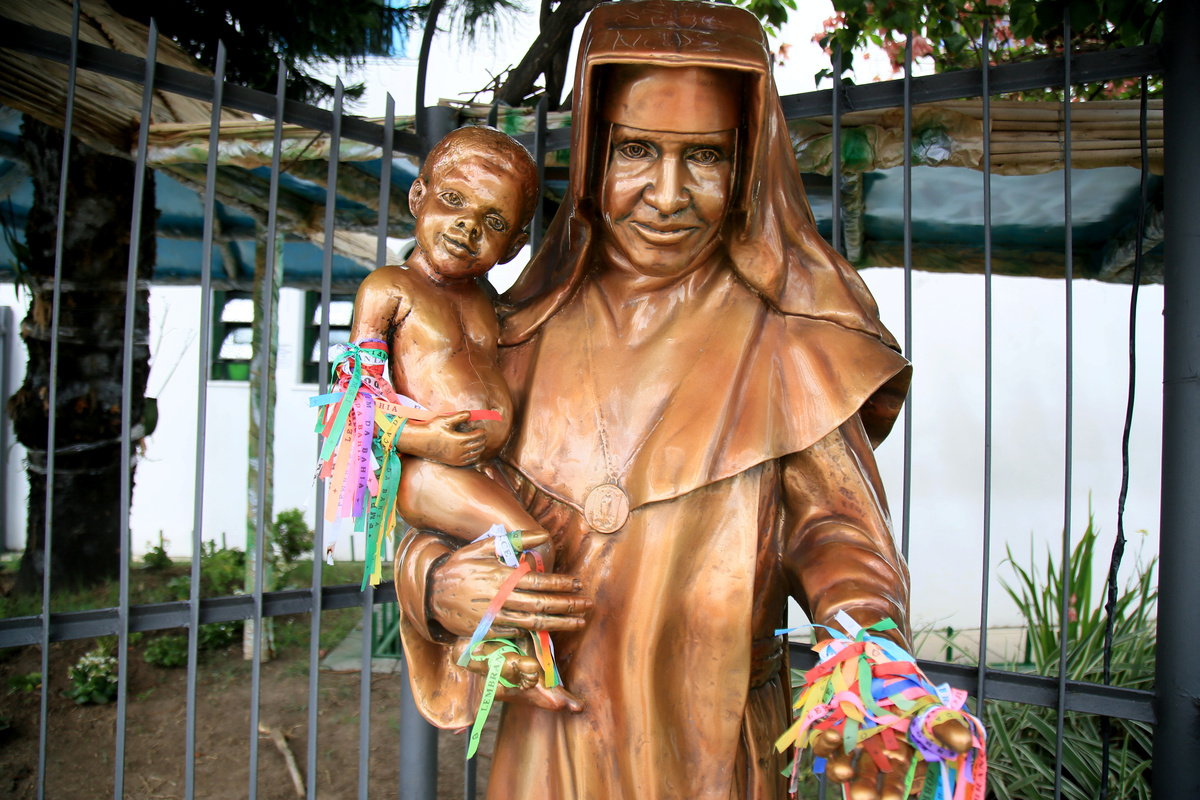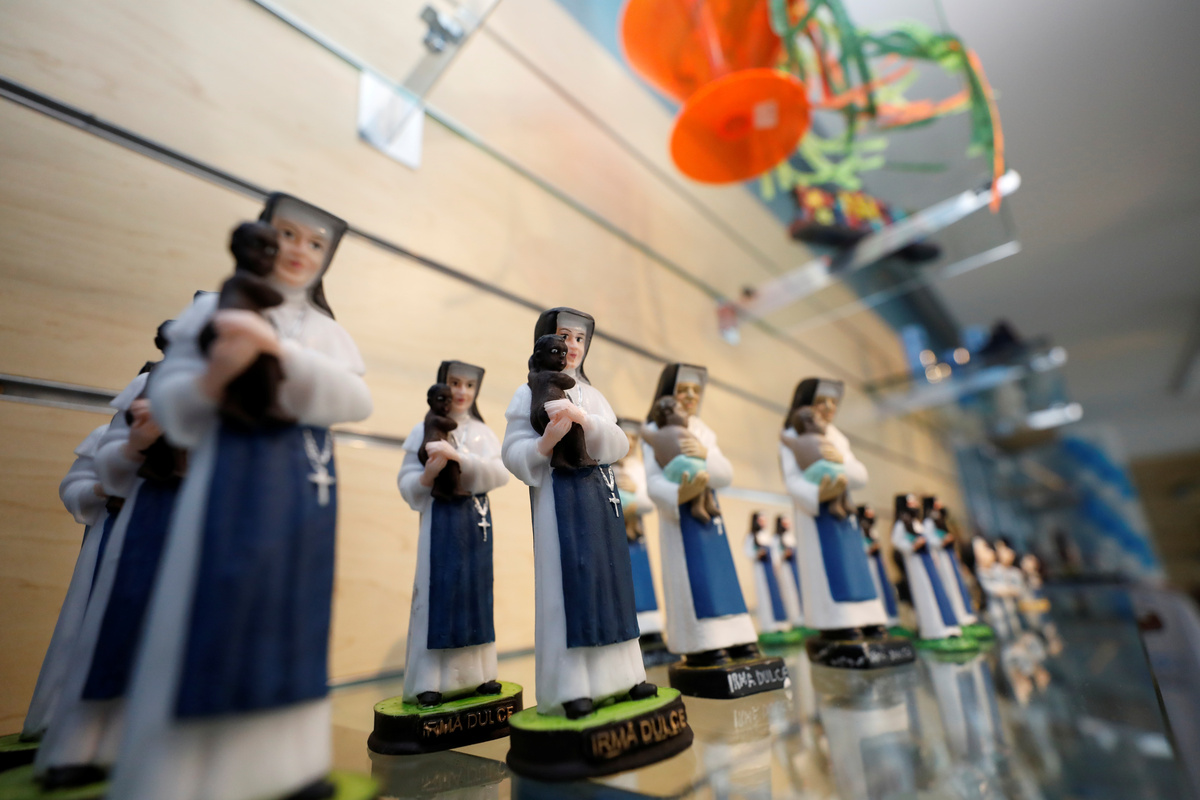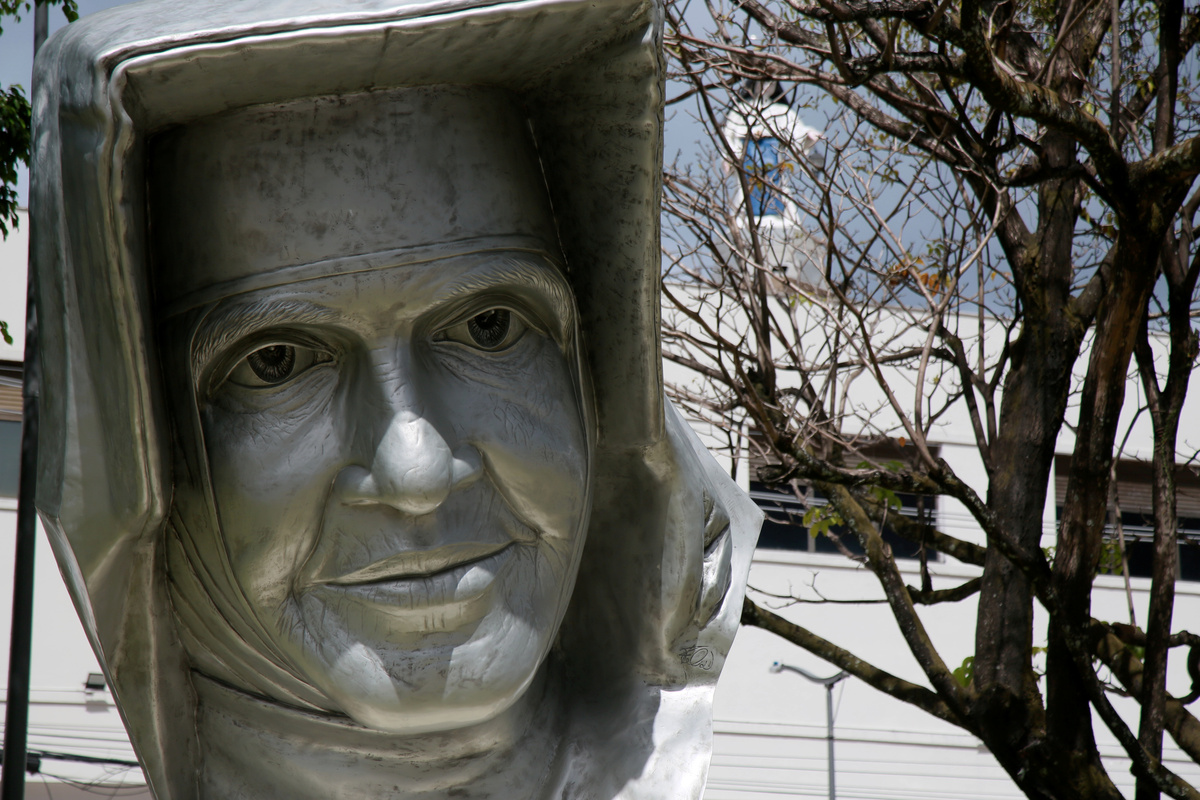Table of contents
General considerations on Saint Dulce of the Poor

Talking about Sister Dulce means to be moved when thinking about so much goodness and detachment. An example of a life totally dedicated to help the underprivileged, that society insists on ignoring. In fact, her work in favor of the needy began when she was still an almost child, only 13 years old.
The title Saint Dulce of the Poor defines very well the purpose of the life of Maria Rita, who changed her name in honor of her mother, who died when the girl was only seven years old. Winner of several titles, she was elected among the 12 greatest Brazilians of all time in 2012, in an election sponsored by press organs.
In a world where selfishness dominates, people like Sister Dulce are wonderful exceptions that transmit hope, making us believe that the human race is not yet lost. An oasis of kindness in the middle of the desert of selfishness where humanity sinks ever deeper. See in this article the story and the great work of Sister Dulce.
Sister Dulce, Beatification and Canonization

Sister Dulce is synonym of generosity, detachment, dedication, altruism, sacrifice, devotion, and many other words that can translate about sixty years of life completely dedicated to help the needy. In order to know better this extraordinary person continue reading this article.
Who was Sister Dulce
Her baptismal name is Maria Rita de Sousa Brito Lopes Pontes, motherless at the age of seven and mother of the poor for the rest of her life. Her existence lasted 77 years and 10 months (1914-1992). Her humanitarian and religious vocation began to manifest itself around the age of thirteen, and at nineteen she became a nun and adopted the name Sister Dulce.
To serve God the "Good Angel of Bahia", another of her titles, she preached through charitable works, in a constant struggle to obtain resources that she destined to the poor, and for this work she became known not only in Bahia, but in Brazil and in the world.
Religious Formation
The religious vocation was already born with her. At the age of thirteen she tried to enter the Santa Clara Convent in Salvador, but the institution refused because of her young age. Thus, the young Maria Rita began the work of assistance in her own home while she waited for the required age.
The Congregation of the Missionary Sisters of the Immaculate Conception of the Mother of God in São Cristóvão, Sergipe, gave her religious formation and she made her vows of faith in 1934. After that she returned to her hometown to work as a nun and teacher in a school that her congregation ran.
Recognition
Although people like Sister Dulce never think of getting recognition from men, this ends up happening as a natural consequence of the work done. Soon she came to be called the Good Angel of Bahia by the people of Salvador, the first beneficiaries of her welfare efforts.
In 1980 Pope John Paul II visited Brazil, and on that occasion Sister Dulce was among those invited to climb the platform of the Pontiff, from whom she received words of encouragement to continue her work. To have one's work praised by the highest Catholic authority is a motive of fulfillment for any religious.
Death
Death is a natural event in the course of life, but some people achieve eternity in the hearts of the people, both by showing strong personality and by the work they accomplished in life. Certainly, Sister Dulce is among those who will never die.
His physical death occurred on March 13, 1992 from respiratory problems at the age of 77, but his presence in the world still happens through all those who have continued his glorious legacy. His death occurred in the room where he lived in the Convent of St. Anthony for about 50 years, in an exceptional example of detachment.
Beatification
Beatification is a rite of the Catholic Church to highlight someone who has rendered relevant services, mainly in the field of assistance to the underprivileged. It is the first step on the path to canonization and can only occur after the recognition of the first miracle attributed to the candidate.
In the case of Sister Dulce the solemn act took place on May 22, 2011, one year after the Vatican recognized her first miracle. The Archbishop of Salvador, Dom Geraldo Majella, was specially designated by Pope Benedict XVI to perform the ceremony.
Canonization
The canonization transforms the mortal into a Saint, but for this he needs to perform at least two miracles, which will be investigated by the church before granting the title. Thus, the first Brazilian saint was named Saint Dulce of the Poor, because they were the central objective of her work.
The official ceremony must be held in the Vatican and only the Pope has the necessary authority to do so. With thousands of people in attendance, including Brazilian authorities, Brother Dulce was canonized on October 13, 2019 at a specific celebration for canonizations in St. Peter's Square.
The 37th Saint of Brazil
The inclusion of Saint Dulce of the Poor in the list of saints of Brazil increased the number to thirty-seven. The high number is explained by the death of thirty people who were sanctified as martyrs in Rio Grande do Norte, when the Dutch invaded a chapel in Cunhaú and another in Uruaçu.
The process of canonization allows people who died as a result of their faith to be canonized as martyrs of the church, even if they were laymen without having lived the priestly practice. The rite also considers as a Brazilian saint a foreigner who renders his religious services in Brazilian territory.
The Miracles of Saint Dulce of the Poor

In order for a process of canonization to take place, it is necessary to confirm two miracles, which are investigated by a commission of the dome of the Catholic Church. Once the first miracle is confirmed, the beatification takes place. See below the two miracles of Saint Dulce of the Poor.
The first miracle
The Catholic rite is strict when it comes to beatification and canonization, requiring not only a virtuous and dedicated life to the faith but also the proven realization of at least two miracles. In the case of Sister Dulce there are reports of more miracles, but they have not been investigated and verified by the church.
The first miracle has already consolidated the beatification and occurred in 2001 when a woman was healed of a serious hemorrhage after childbirth. The visit of a priest to pray, and the appeal made by him to Sister Dulce would have performed the healing of the problem, characterizing the miracle.
The second miracle
A miracle is an extraordinary event that defies proof and does not follow the natural laws of physics, medicine, or other regularly accepted laws. Most cases have to do with instantaneous healings, but they can also occur in a slower process.
According to reports that were investigated and confirmed by the church, a musician named Jose Mauricio Moreira would have been healed of blindness that had lasted 14 years. The musician would have asked Sister Dulce to relieve a pain in the eyes and 24 hours later had already returned to see.
Outstanding episodes in your life
Sister Dulce had a busy life with much work and worries, as she tried to alleviate both hunger and illnesses of the poor. A highlight was the loss of her mother when she was seven years old, but this did not make her weak in her vocation.
Another fact of strong impact, the promise to sleep in a chair in case her sister survived the complications of childbirth was faithfully fulfilled. Her sister had the same name as her mother, Dulce, and only passed away in 2006. Thus, Sister Dulce slept sitting in a wooden chair for about thirty years.
Facts and curiosities about Saint Dulce of the Poor

Sister Dulce lived doing charity and fighting for improvements that would soften the lives of the poor people of Salvador. A biography marked by fearless acts, with the courage that only those who are guided by a superior force can possess. Know below some more relevant facts of Saint Dulce of the Poor.
The first saint actually born in Brazil
The Catholic Church counts 37 Brazilian saints, although some of them were not born in the country. Even so, because they lived their religious life in Brazil, in the act of canonization they were considered Brazilians.
What allowed Sister Dulce to be considered the first Brazilian-born saint was the impossibility of identifying the nationality of many of the thirty martyrs, who were canonized for dying in defense of the faith in Rio Grande do Norte in 1645 during the Dutch invasions.
Dulce's health problems
Sister Dulce would probably have lived a few more years if she had taken as much care of herself as she did of others. However, this seems to be a characteristic of the saints and does not need questioning. The fact is that the respiratory problems that led to her death were not recent.
Thus the nun was hospitalized in November 1990 to treat her compromised lungs, but she died two years later in her room in the convent where she had always lived after returning to Bahia.
The relationship between Sister Dulce and the number 13
The official day to honor Saint Dulce of the Poor is August 13, which is also the day she took her vows as a nun. In addition, she had her baptism on September 13, 1914 and died on March 13, 1992. Her canonization took place on October 13, 2019 and she began her activities helping the poor at the age of just 13.
It is most likely that Sister Dulce did not even think about these details, since her focus was on the sick who lived under her protection. In any case, regardless of whether or not it is a simple coincidence, it is a curious fact and that is why it was recorded in her biography.
The day of Saint Dulce of the Poor
All the saints of the Catholic rite have their specific day defined in the act of canonization, which serves to perform the official ceremonies of the church, but devotion and gratitude for their miracles can be expressed any day.
In this sense, the day on which the church celebrates the tributes to her Saint Dulce is August 13, a day on which masses take place all over the country, especially in Bahia and Sergipe, the places where the saint was most active.
Separation from the Congregation of the Sisters
Being part of a religious congregation implies following the rules of conduct and discipline that it demands, and in most of them isolation in the convent is part of the procedure.
However, this was not the goal of Sister Dulce, who really wanted to be in the streets showing her devotion through her work that would result in improvements for the suffering people of Bahia. For this reason, Sister Dulce was away from these duties for about ten years, until illness made her return.
Space occupation
In order to develop her charitable activities, the religious did not measure efforts or sacrifices, and did whatever was necessary to achieve her objectives. An example of this attitude was the occupation of a chicken coop, which later became a hospital.
In addition, the nun used to house her destitute in houses that were uninhabited, and when they were forced to leave she did not hesitate to occupy another. This happened several times and gives a very clear idea of the obstinacy, perseverance and courage that drove Sister Dulce.
Nomination for the Nobel Peace Prize
The recognition of society for her work was seen only as a means to raise more donations and volunteers, which in the beginning were the main help available to the then nun. She was already the Good Angel of Bahia, but a world event projected her internationally.
In fact, in 1988, the then president of the Republic had the support of Queen Silvia of Sweden and nominated the nun for the Nobel Peace Prize. Sister Dulce was not the winner, but only the nomination reverted into worldwide popularity and recognition, which greatly helped the progress of her work.
The Prayer of Saint Dulce of the Poor
Prayer is the means by which you make your request, as well as give thanks and praise to the saint of your devotion. You do not need to repeat a prayer you have already said, for the words that come from your heart are the most precious. Nevertheless, below is one of the many prayers to Sister Dulce that you can use as inspiration.
"Lord our God, remembering your daughter, Saint Dulce of the Poor, whose heart burned with love for you and her brothers and sisters, especially the poor and excluded, we ask you: give us the same love for the needy; renew our faith and hope, and grant that, following the example of this daughter of yours, we may live as brothers and sisters, striving daily for holiness, so that we may be authentic disciplesmissionaries of your son Jesus. Amen"
How can St. Dulce of the Poor help me?

When she was living among men, Sister Dulce had many limitations, so she concentrated her efforts on caring for people in poor health who were abandoned by the system. In addition, Sister Dulce struggled with a fragile state of health.
However, with sanctification these barriers have come down and Saint Dulce of the Poor can perform other miracles, if you trust and deserve it. So, use all your faith and ask for virtues such as wisdom and humility, which are requirements to understand the language of angels and saints.
In this way, faith in Saint Dulce can help you in any situation of physical or spiritual distress, but sometimes some people don't like how the help comes. The saints are happy to help; it's their job and they do it with love. Just be careful not to ask Saint Dulce of the Poor for something you could do yourself.

